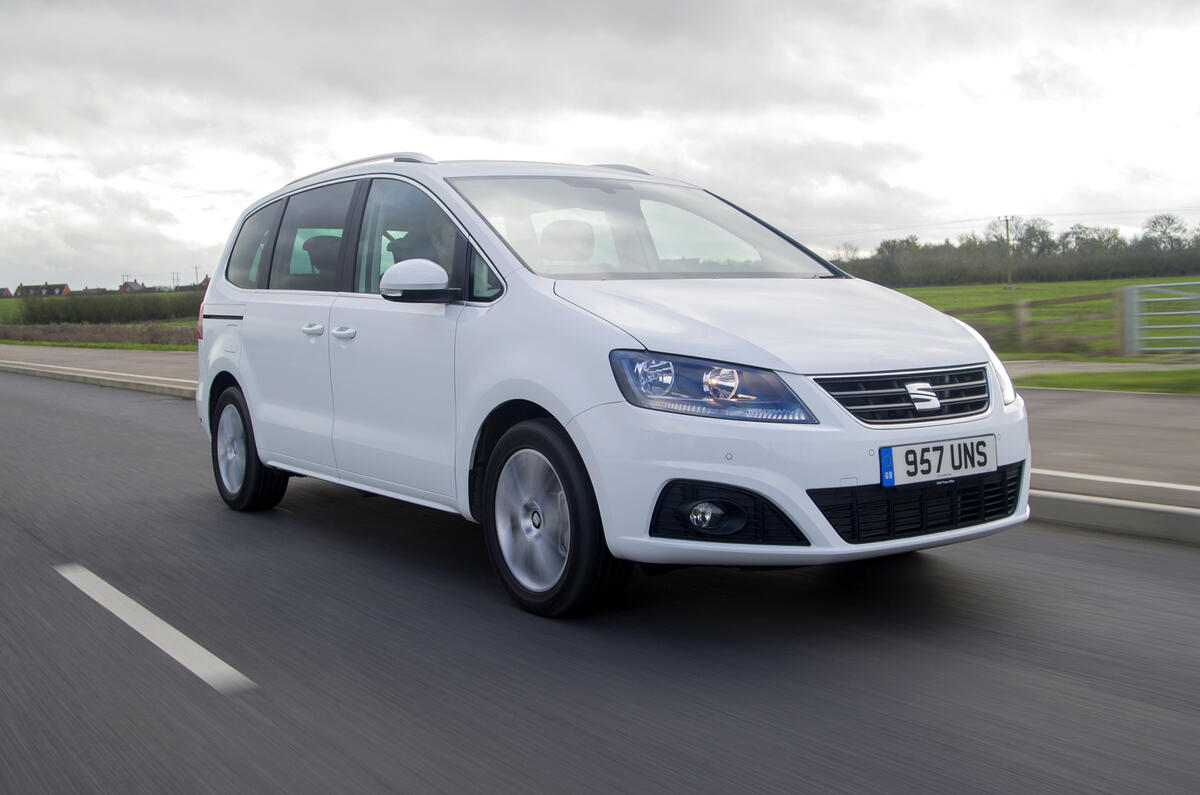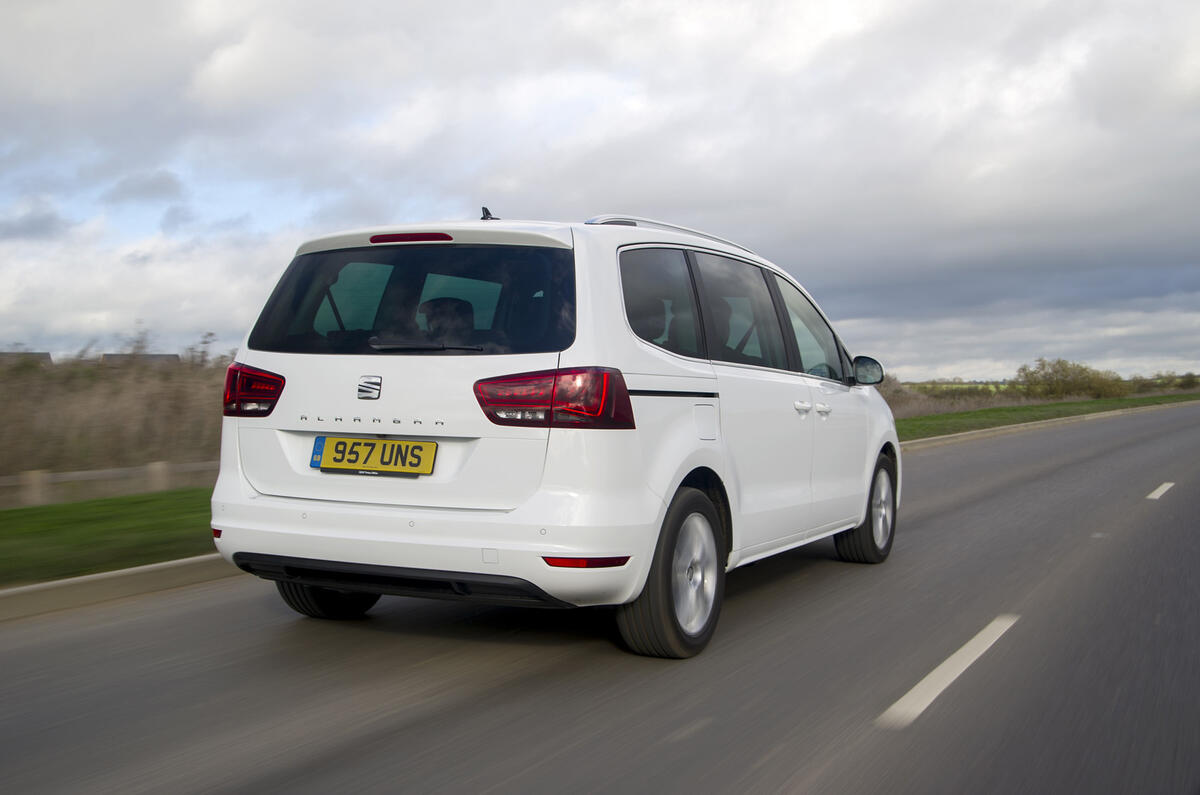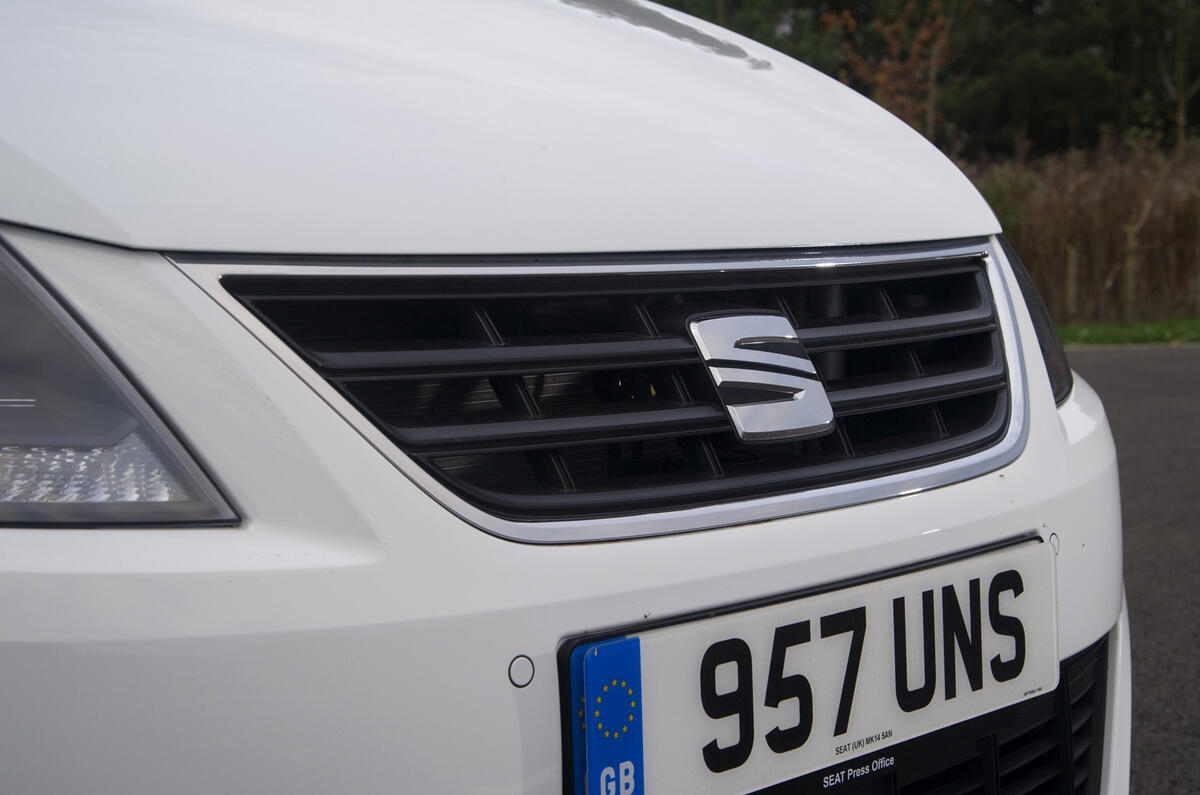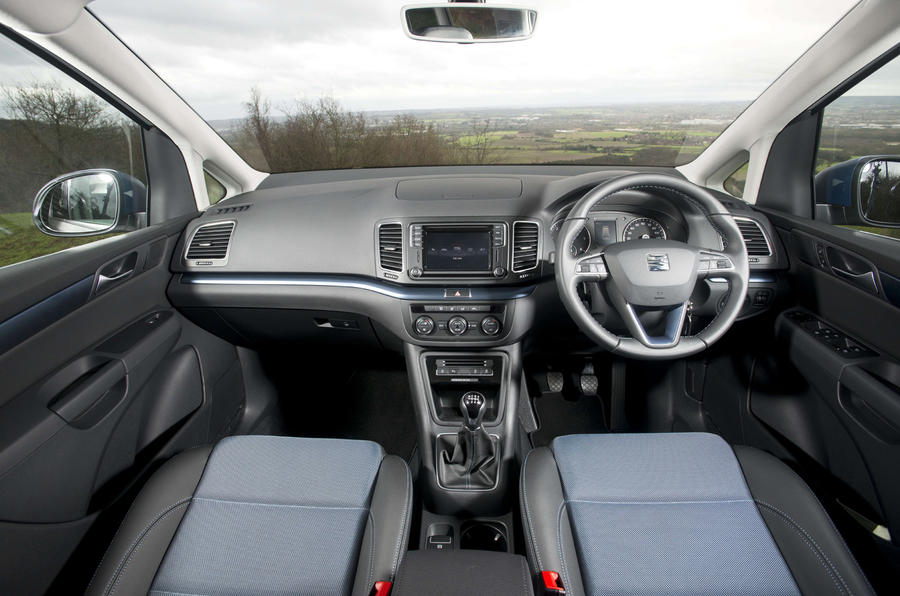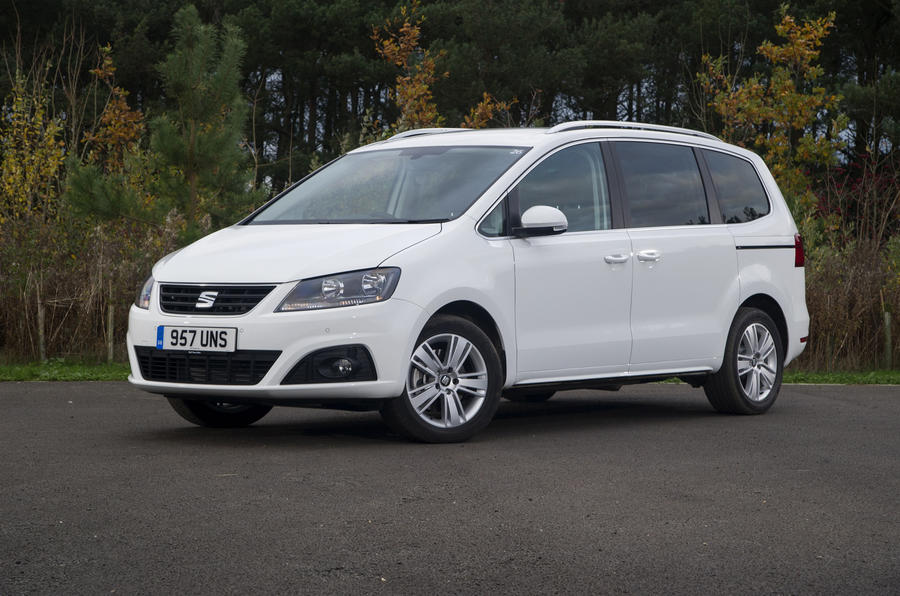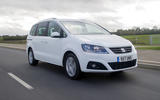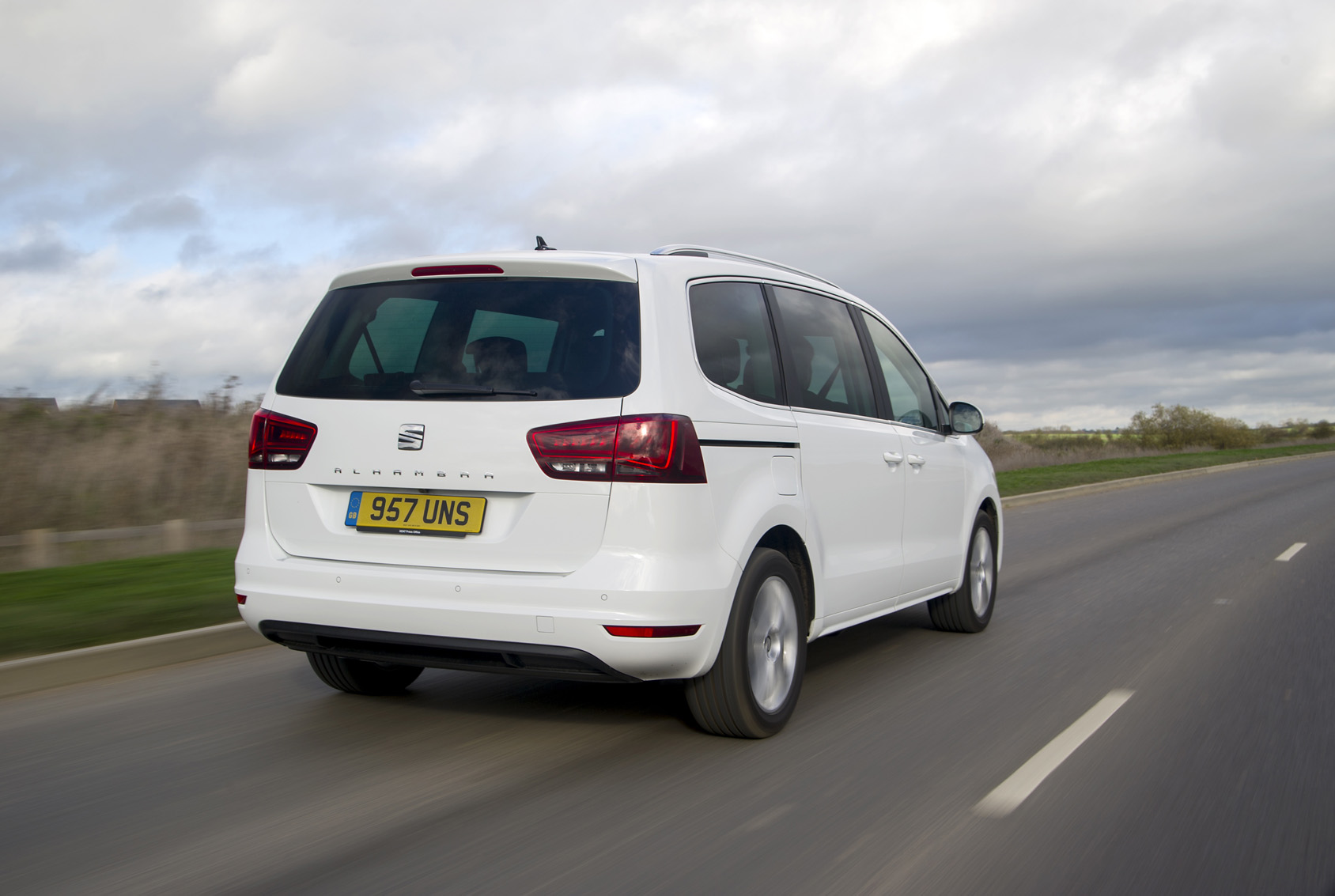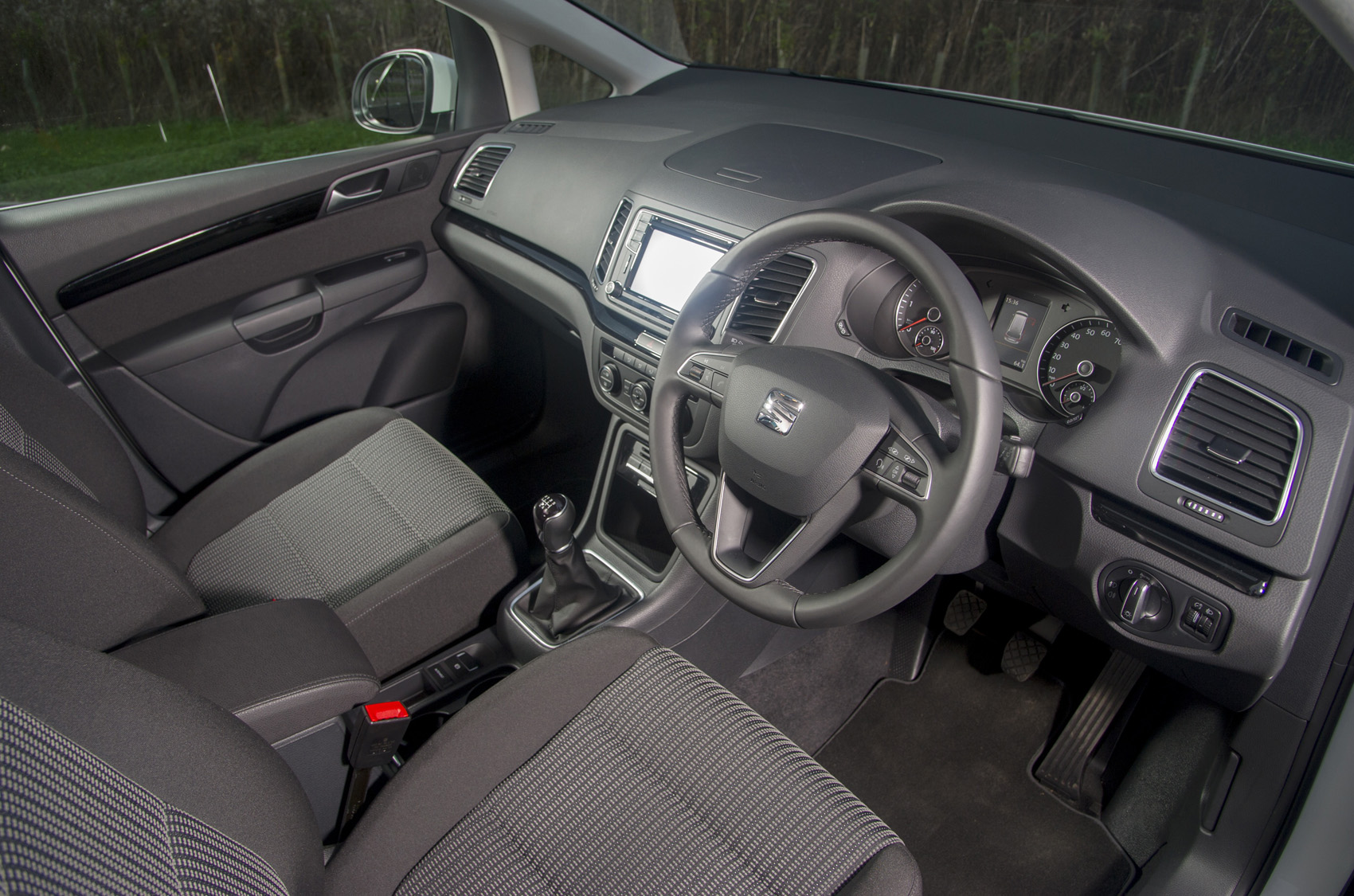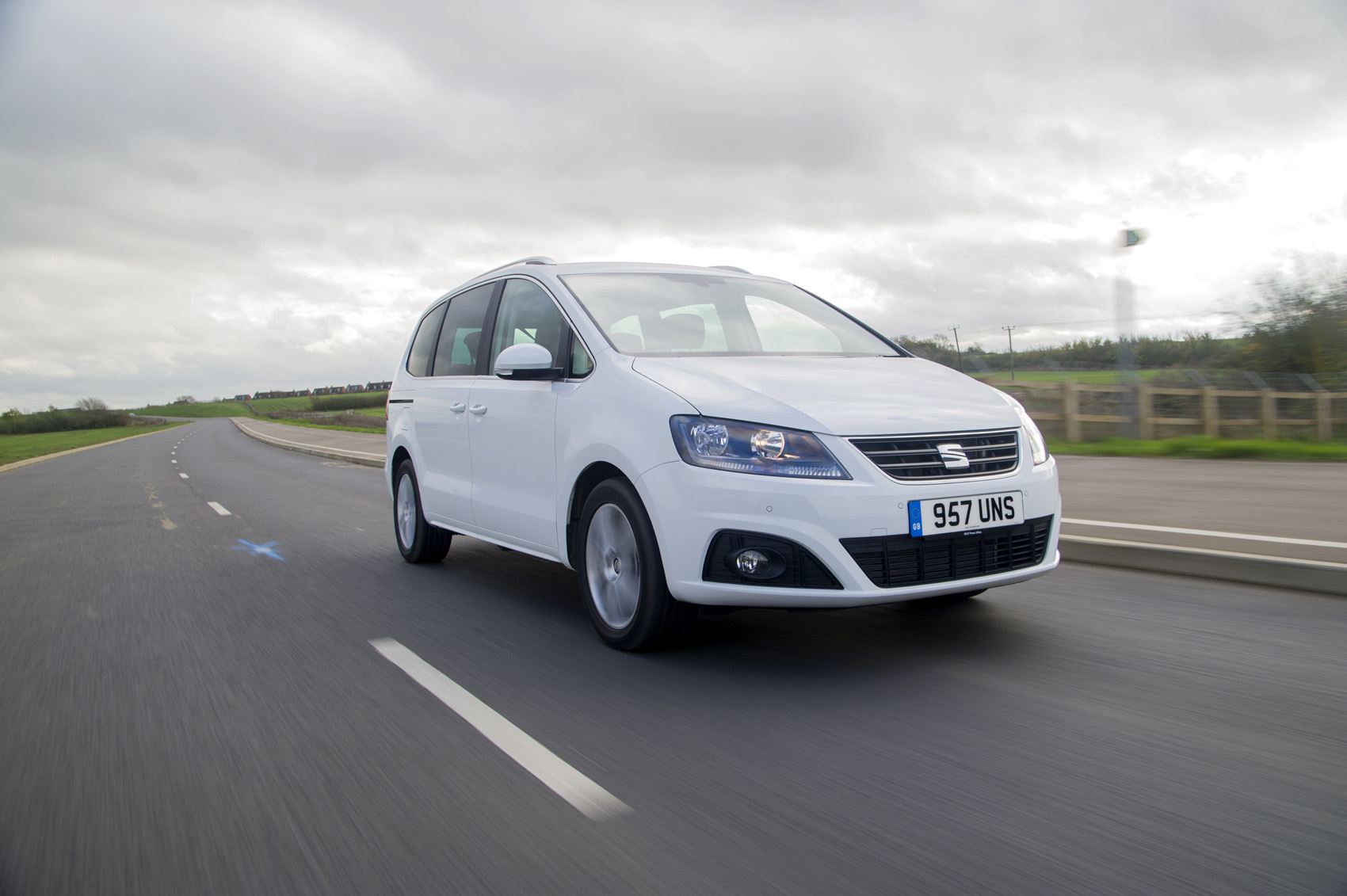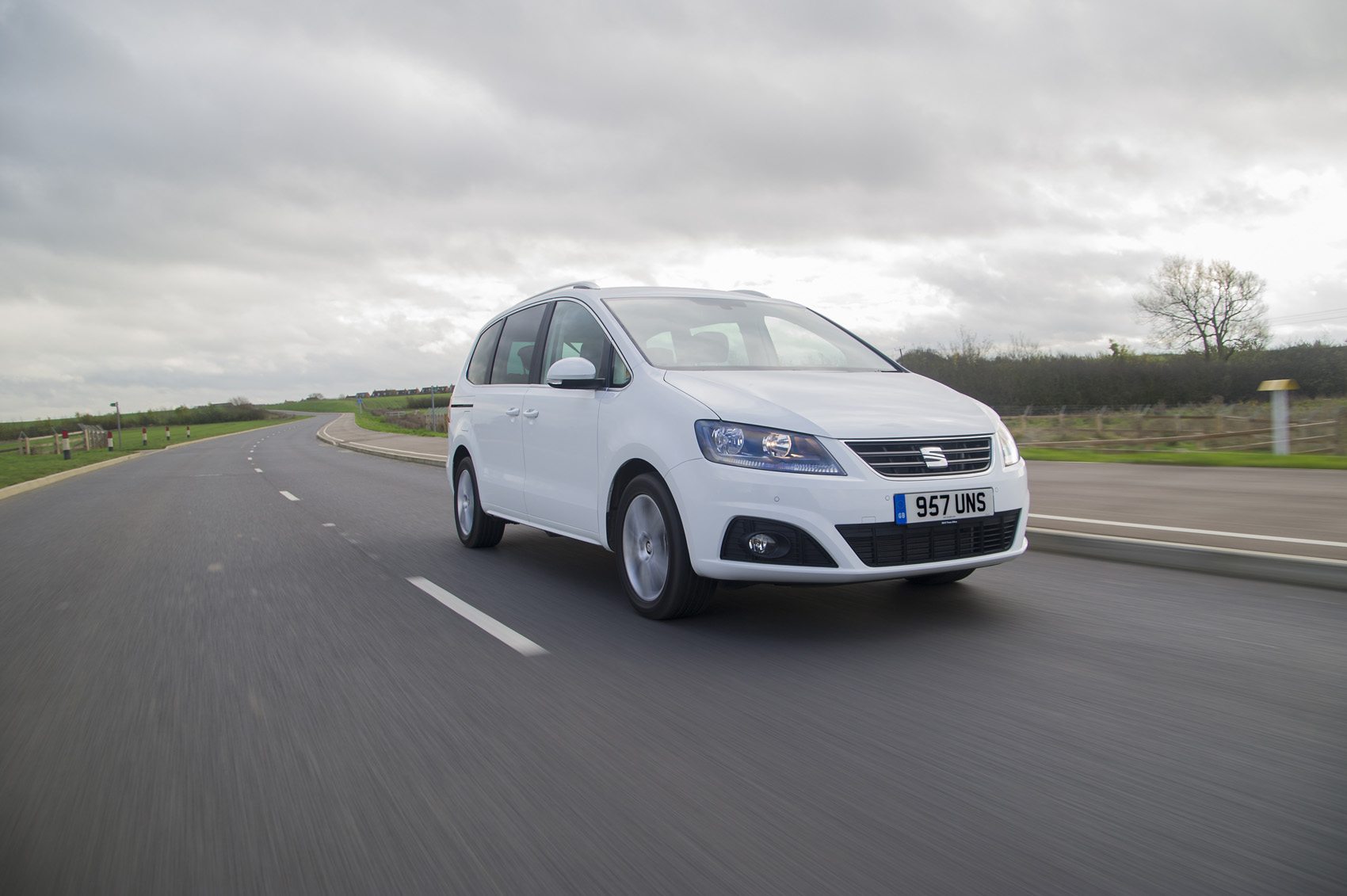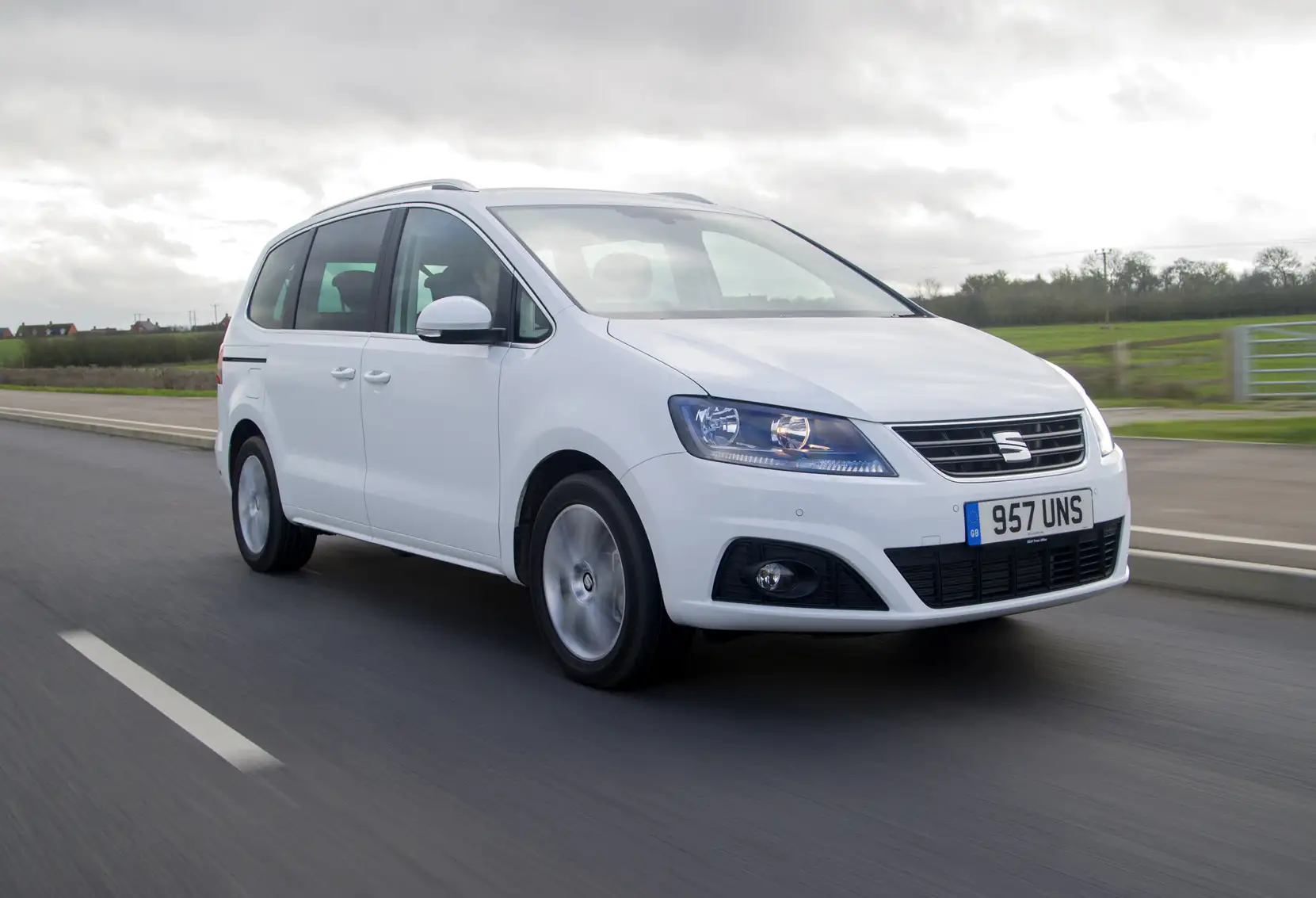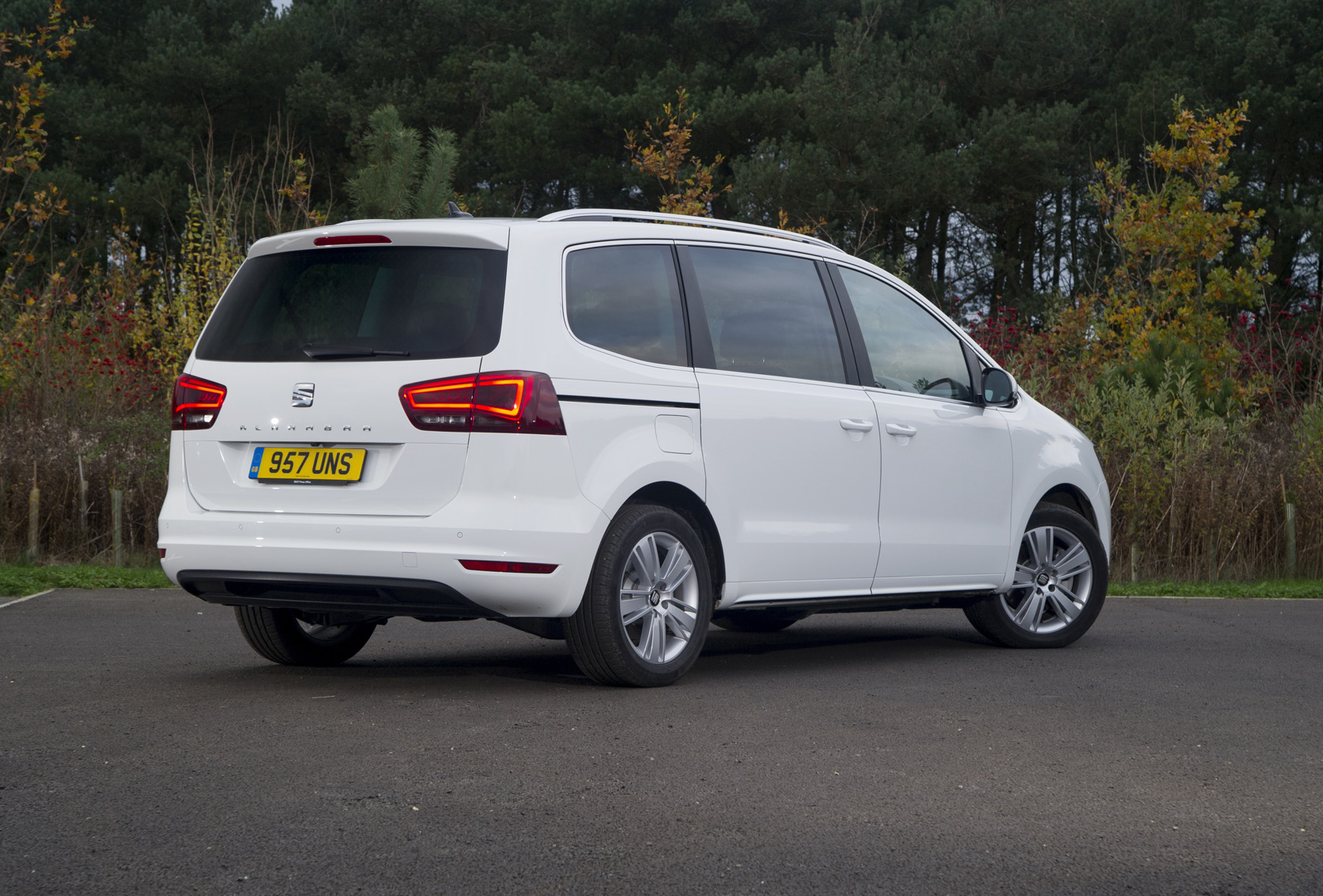If fitness for purpose were the only aim here, then the Seat Alhambra is a complete success.
The three seats in the middle row can individually slide and fold, and there’s ample space for three adults, even if elbow room might be slightly tight across the fairly narrow seats. The two outer seats in the middle row tilt up and forward – flattening against the front seats rather than folding – with a pull of the lever on the side of the squab. This reveals a decent-sized gap to access the rearmost seats with less hassle and effort than in most other seven-seaters.
Each seat in the second and third rows can be tumbled into the flat boot floor with one movement, although the rear seats are quite heavy and take some heaving to pull back up, even if only one action is required to do so.
In the five-seat layout, there is 1167 litres of space available up to the roof. Fold all the seats flat and the Alhambra can offer up to 2297 litres if filled to the roofline.
Even if outright volume is short of that offered by the Ford Galaxy and other supersized MPVs, the low load height and 2.0m-long, square load bay should prove useful enough for all but the most paraphernalia-laden families.
From the driver’s seat, the Alhambra is pleasantly unfussy. The switchgear is laid out clearly and there is a sense of solidity to the whole cabin. Visibility is excellent, with the high side windows, broad windscreens and standard sunroof giving a generally bright, open feel to the cabin.
Having such flat seats is less than comfortable over very long distances, but even if more bolster support would be welcome, this Seat offers the driver and passengers a decent way to travel. We’d always opt for a car with electric side doors, though – they’re heavy without assistance.
On the equipment front, there are five trim levels to choose from - S, SE, Connect, SE Lux and FR Line. The entry-level Alhambra's come with 16in alloy wheels, heated door mirrors, sliding rear doors, parking sensors, and soften suspension as standard on the outside, while inside there is three-zone climate control, electric windows all round, and a 6.5in touchscreen infotainment system complete with Bluetooth streaming included.
Upgrading to SE gets you a few more luxuries including 17in alloy wheels, tinted rear windows, front foglights, cruise control, and automatic wipers and lights, while the Connect models gain numerous trim only features such as sill plates, blue cloth upholstery, run flat tyres and smartphone integration.
The former range-topping SE Lux trim adorns the seven-seater with electrically opening rear doors and tailgate, a panoramic sunroof, leather upholstery, heated front sports seats, sports suspension and the inclusion of sat nav, DAB radio and a reversing camera. The FR-Line equipment level gains numerous sporty details including bigger alloys, an aggressive bodykit, FR decals and an Alcantara upholstery.




